| |
|
| |
General Note |
 |
Copenhagen is a wonderful city. On a sunny day you shouldn't go into museums (with
the possible exception of the Carlsberg brewery beer museum) but walk around and look at all those people (including dragons)
hanging around on the top of buildings, palaces, fountains, and so on. To my amazement I also learned that due to some oversight
it wasn't my ancestors who last destroyed Copenhagen (they only occupied it) but the British Admiral Nelson in 1801 for some obscure reason. |
| | |
| |
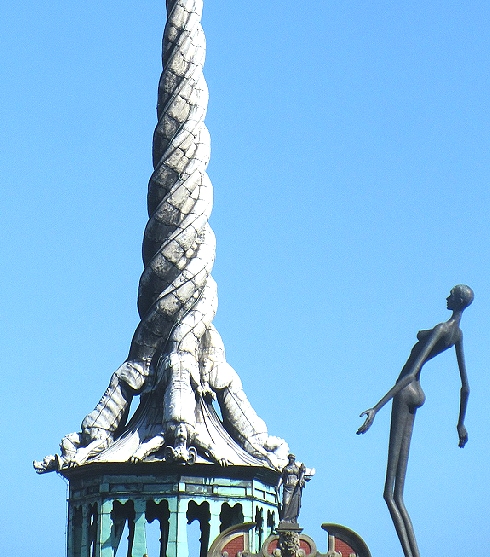 | | People on buildings in Copenhagen |
| Source: Everything here was photographed by yours truly |
|
| | |
|
 |
There are fantastic museums, too, and I spend many hours in the National Museum,
Denmark's largest museum of archaeology and cultural history.
To make a long story short: it is a great museum.
|
|
 |
As far as metals are concerned, they have plenty of copper and bronze objects, either right
from Denmark or from Egypt, Greece or elsewhere. Those old Danes in the 19th century have been out and collecting, just
like anybody else from the more advanced countries, whenever they didn't kill each other.
As far as iron and steel is
concerned, they also have a tremendous treasures right from Denmark (or what used to be Denmark): the bog
treasures, covered elsewhere in more detail.
In short, old Danes (or whatever they called themselves) that lived
up there before the Vikings, sacrificed huge amounts of war booty, including many fancy pattern-welded swords, in their
local bogs .
Here is an example: |
| | |
|
|
|
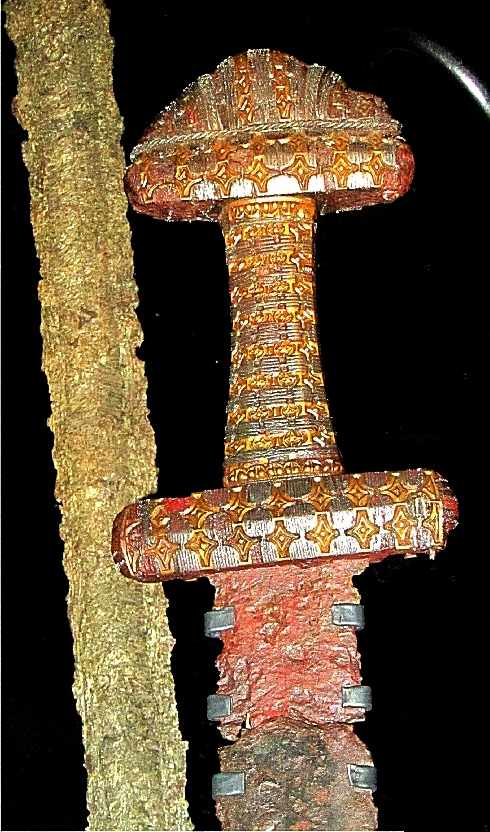 |
| Pattern-welded (Viking type)
sword with elaborate hilt. |
|
| | |
|
|
 |
Parts or most of what is known as the Nydam
treasure is now in the "Landesmuseum Schleswig-Holstein in Schleswig, Germany"
and the Danes want it back. What they still have, however, is plenty. Alas, as usual, the artifacts are neither displayed
in a particular good way nor do the explanations justice to what you see. It might be a tad better than most exhibits of
this kind, but there is plenty of room for improvement.
The rather unbelievable Lindholmgård sword, for example, is displayed in the back of a case and kept rather in the
dark. |
| |
|
|
 |
 |
| A pile of (badly lit) sword blades from the Nydam treasure. |
|
| | |
 |
They way those swords are displayed and illuminated makes it hard to see details.
It makes it even harder to take good pictures because it is almost impossible to avoid reflections from the commom glass
used for the display cases.
It was clear that many of those swords were pattern welded but no information about that
was given. |
|
 |
But then there were compensations. For example one of the oldest Nordic wood sculptures. It
makes quite clear that those guys knew what their swords symbolized: |
| | |
| |
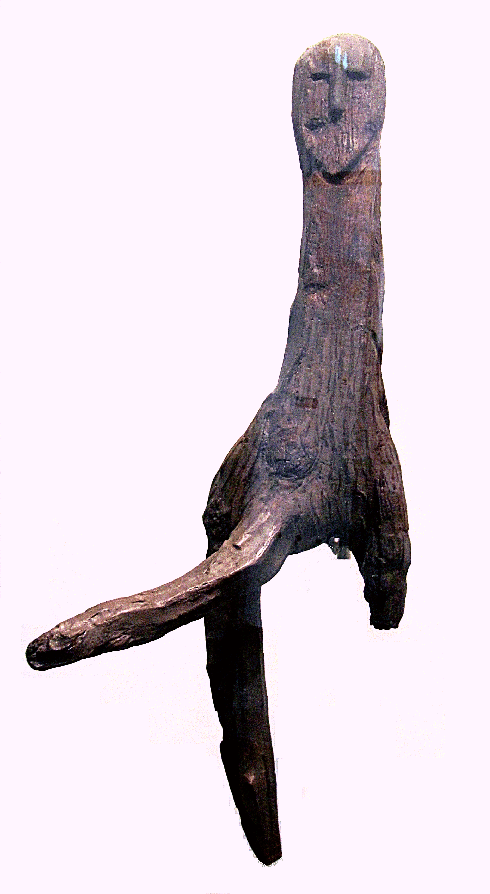 |
| One of the oldest wood sculptures |
|
| | |
|
|
 |
There is the world famous Gundestrup
silver cauldron and probably the world's largest collection of lures
, a simple wind instrument but far more difficult to make than a bronze sword; and so on. |
| | |
|
|
|
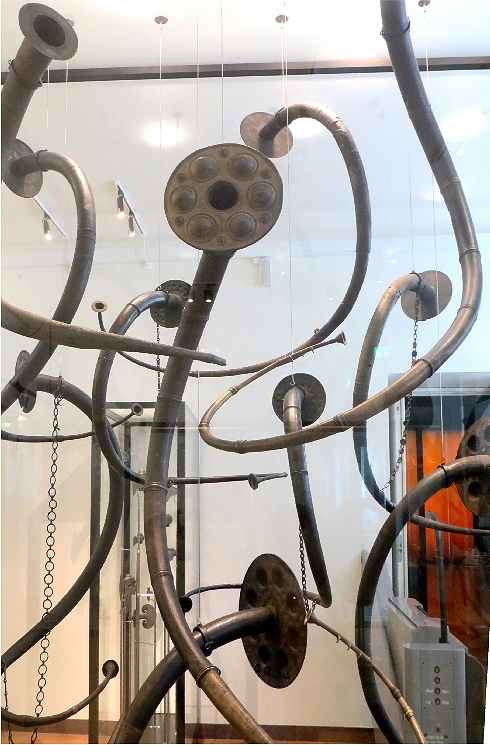 | | Bronze lures |
|
| | |
|
|
 |
Not to forget: There are innumerable Greek vases and other objects from the early Mediterranean
region, Roman stuff, things from the Pacific areas, from Africa an so on. Noteworthy
are the Egyptian artifacts, including what must be the world's first barbie doll: |
| | |
|
| |
|
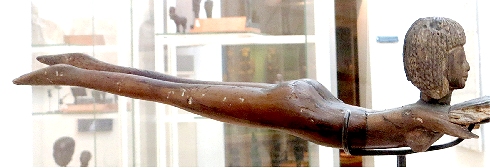 |
| Barbie? |
|
| | |
|
 |
Of course there are acres of local stuff, like the ubiquitous St. George slaying a dragon. |
| |
| |
| |
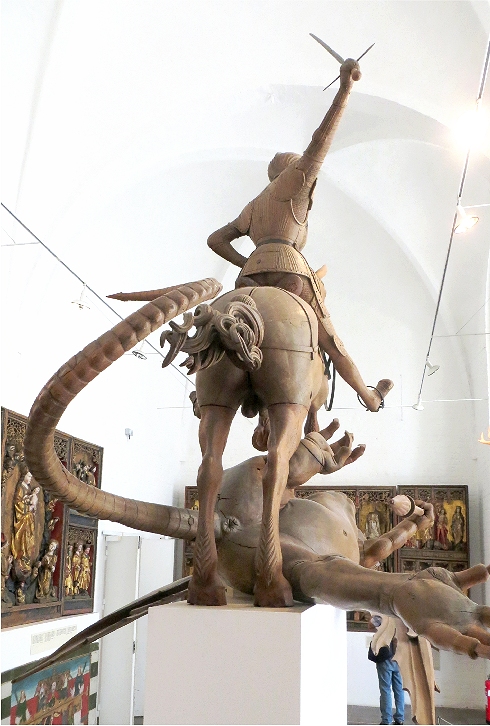 | | Saint George slaying the dragon
|
|
| | |
|
| |
 |
This one doesn't have tits
but a well-rendered asshole. |
© H. Föll (Iron, Steel and Swords script)







